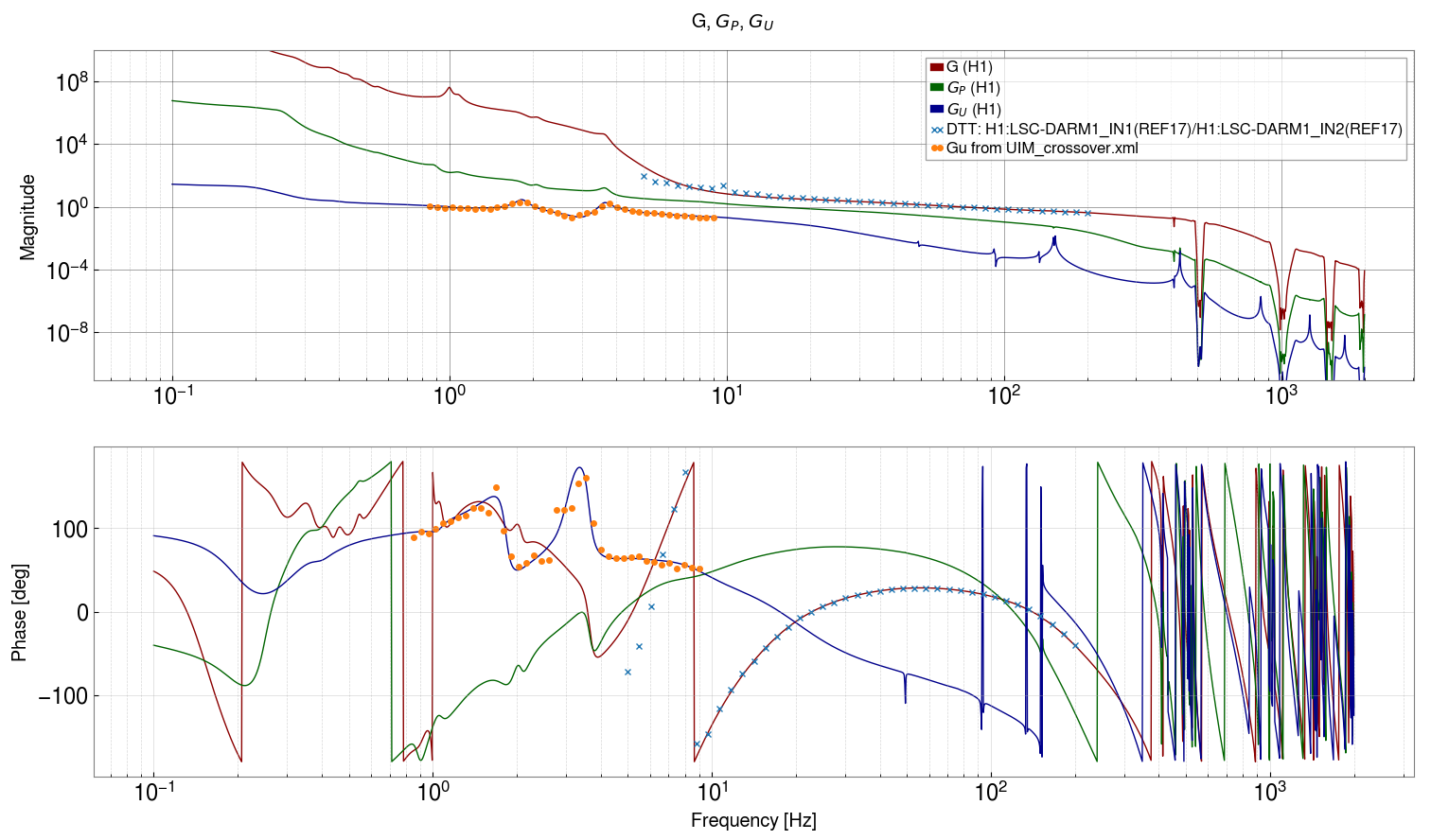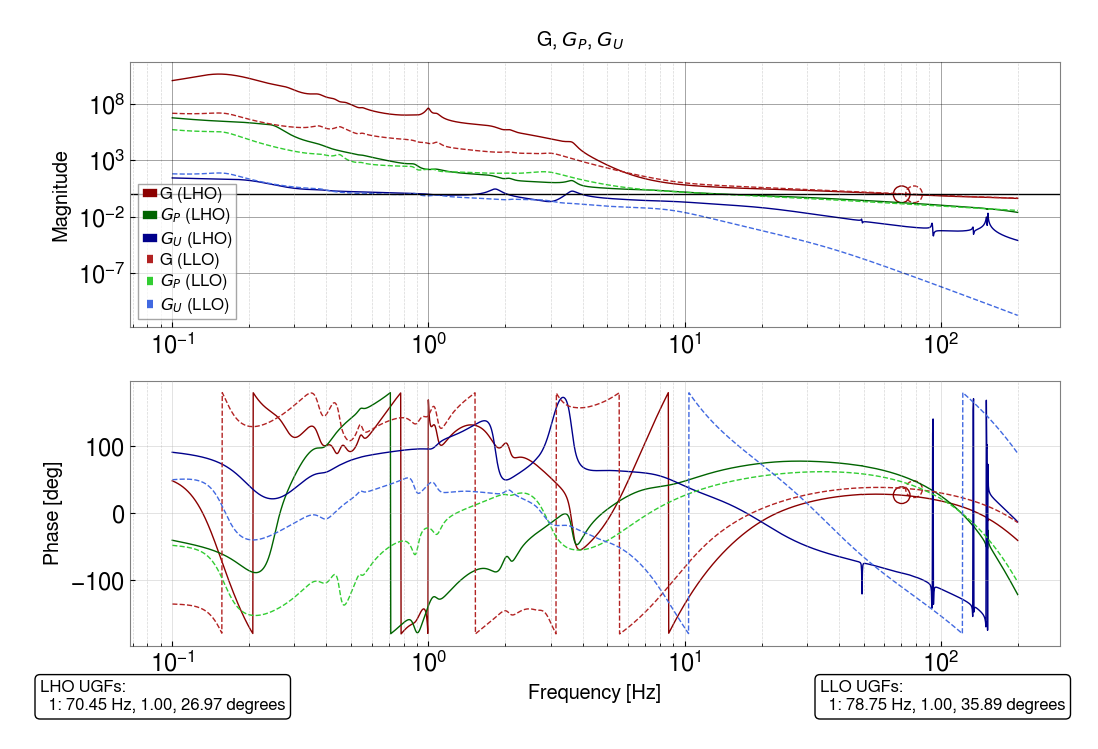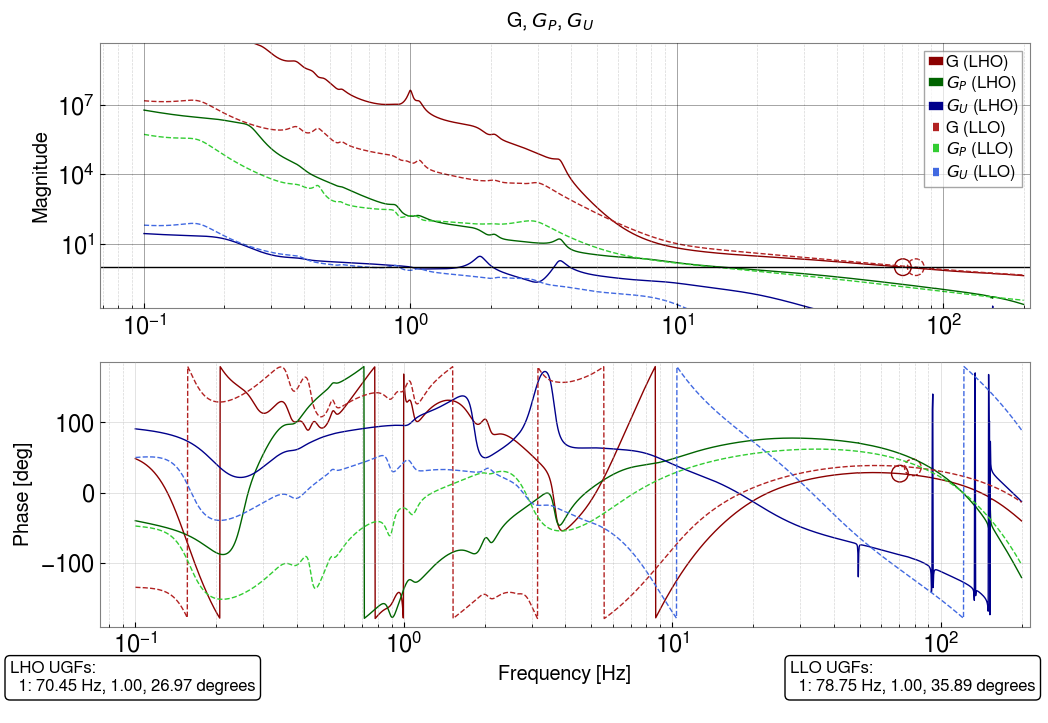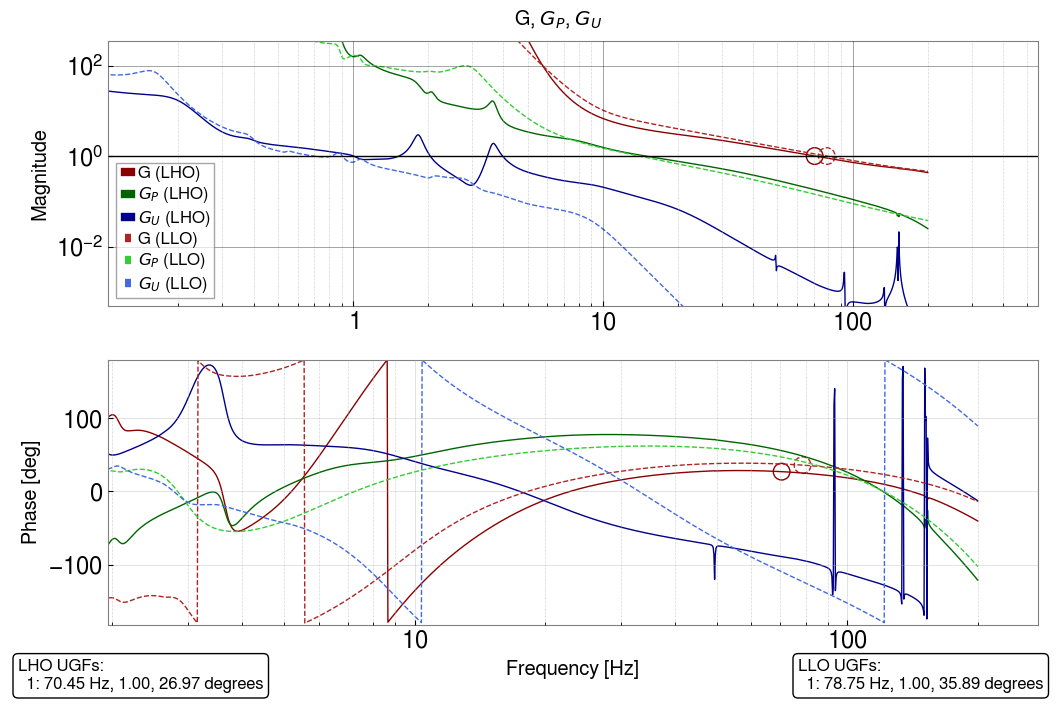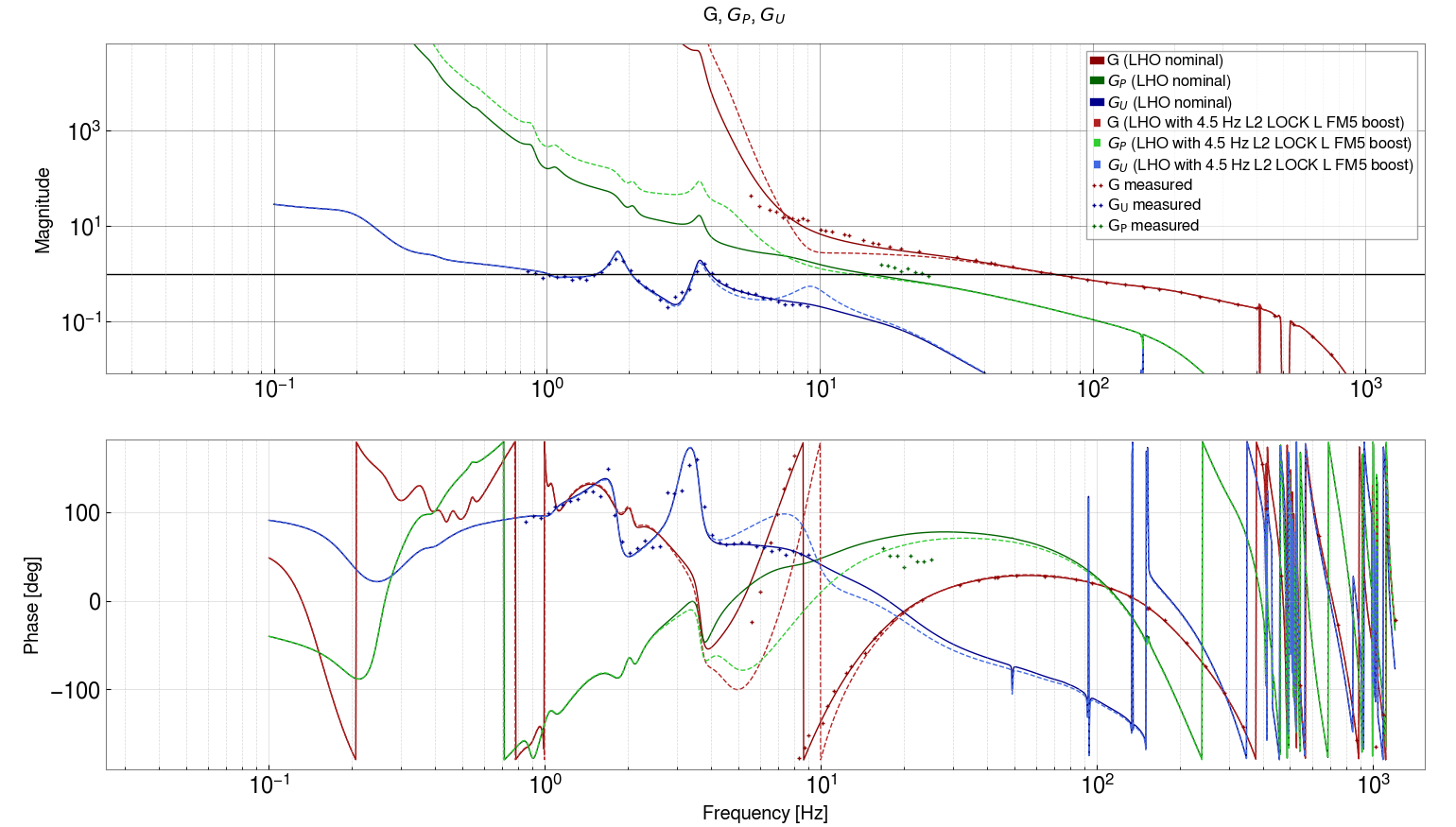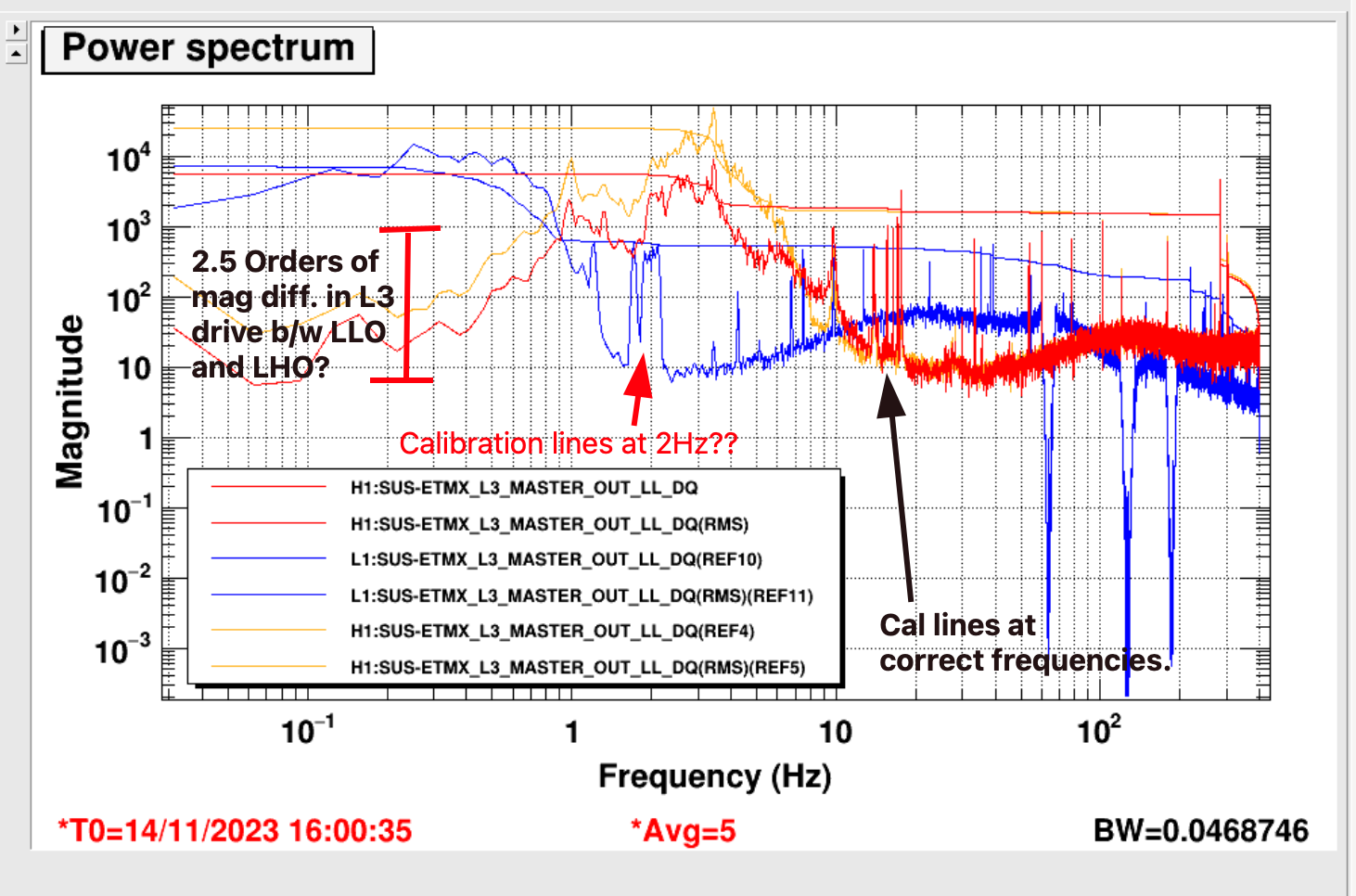Summary: This investigation tested the recent hypothesis that the MC baffles in the input arm, particularly the one by HAM3, were producing noise in DARM (74175). I found strong support for this hypothesis: the varying amplitude of baffle motion from beating shakers matched the variation in DARM, and the velocity of the baffles measured with the laser vibrometer could roughly predict the scattering shelf cutoff in DARM. I think that we can be reasonably confident that improving these baffles during the break will result in gains of a few Mpc, and, by removing noise, make it easier to investigate the mystery noise band. I think the baffles are not angled enough and they retro-reflect light scattered from certain optics. The SLiC group and others are developing hardware and techniques to increase the angle of the baffles, patch bad spots, and increase their damping.
Introduction
We have shown that shutting down air conditioners in the corner station electronics bay when they run at 13.1 Hz, removes broad peaks in DARM at multiples of this frequency, improving range by 2 or 3 Mpc (74677, 73430). I have recently found that shaking of the input arm couples strongly to DARM at 13.1 Hz and 15.2 Hz, and that vibration increases at single-frequencies between about 12 and 18 Hz, by as little as a factor of two, can produce upconverted noise in DARM (74175). This makes this region also a likely source of more broad-band coupling of the CS HVAC and the ambient vibration background in this band. I suggested that the coupling was through scattering off of the MC baffles, most likely the one by HAM3. We have been tentativly planning on working on these baffles during the January break if they are confirmed as the source of this noise, the purpose of this investigation.
Laser vibrometery: MC baffle by HAM3 has resonance at 13.1 Hz, MC tube has axial resonance at 15.2 Hz and MC baffle by HAM2 has resonance at 18 Hz.
Figure 1 shows spectra from accelerometers and the doppler laser vibrometer when it was pointed at the different MC baffles, confirming that the baffle by HAM3 has a 13.1 Hz resonance. I had to shake the input arm broad-band in order to make the motion large enough for the laser vibrometer. The figure also has photographs of the vibrometer beam spot on the baffles. I checked the calibration of the laser vibrometer by shining it beside an accelerometer on the beam tube.
Single frequency investigations:
18 Hz – Beating shakers point to dominance of HAM2 MC baffle scattering at 18 Hz, velocity predicts scattering shelf edge, noise in DARM starts at about 5 times the 18 Hz vibration background: In order to determine if we should work on the baffle by HAM2 (strongest resonance at 18 Hz) in addition to the one by HAM3, I investigated whether the DARM noise from 18 Hz shaker injections was coming from the baffle at HAM2, or the one at HAM3, which also moves at 18 Hz during the injection. Figure 2 shows that both the beating shaker phase and the predicted shelf cut-off are consistent with coupling at the HAM2 MC baffle but not the HAM3 baffle. For my 18 Hz injection, the HAM2 MC baffle was moving about 230 microns per second, which predicts a scattering shelf cutoff of about 640 Hz, while the cutoff in DARM was at about 500 Hz, reasonable agreement. By slowly decreasing the shaking amplitude, I estimated that an increase in ambient at this frequency by about 5 would produce noise in DARM. There are many transients that can reach this level, and there may also be off-resonance coupling, so I think we should also work on the baffle by HAM2.
15.2 Hz – HAM2 and 3 MC baffles move about the same, was unable to determine which one dominates noise: The 15.2 Hz resonance is actually a beam-line resonance of the MC beam tube and so both baffles were moving about the same amount and I couldn’t distinguish between them by the shelf prediction. Unfortunately, I was also not able to distinguish between them with the beating shaker technique because my data were swamped by scattering from a 76 Hz resonance (the shaker was making higher harmonics). I was not able to eliminate this higher frequency shaking because one of the shakers broke down and I used a speaker as a shaker (which produced higher harmonics).
14.1 Hz – in between resonances, noise in DARM starts at about 3 times the 14.1 Hz vibration background: Figure 3 shows that noise starts appearing in DARM when vibration at 14.1 Hz is increased by about 3 over background. Since there is coupling over a 12-18 Hz band, a broad band increase of less than this would increase the velocity enough to show in DARM. As pointed out in (74175), this off-resonance coupling may be currently limiting DARM and be a source of broad-band HVAC coupling.
13.1 Hz – velocity of HAM3 MC baffle predicts DARM scattering shelf edge much better than velocity of HAM2 baffle – noise currently in DARM : The CER fans that cross 13.1 Hz increase motion of the MC tube by only a factor of 3 or so, strongly affecting DARM (73430), and my injections showed that at 13.1 Hz ambient noise levels may be limiting DARM at 13.1 Hz. For my larger injections, the vibrometer indicated that the sampled point on the baffle reached 120 um/s RMS, predicting a shelf cutoff of about 340 Hz, while the actual shelf cutoff was at about 450 Hz. So the part of the baffle doing the reflecting must be moving a little more than the point measured by the vibrometer. At 13.1 Hz, the motion of the MC baffle by HAM2 was more than an order of magnitude lower than the HAM3 baffle, excluding it.
When I return, it would be interesting to complement these single-frequeny injections with broader-band injections that could better determine the current contribution of ambient vibration to DARM.
Suggestions for mitigation
Figure 4 shows that the 5 degree angle of the baffles is small enough that some parts of the baffle are normal to scattered light from certain optics. The photographs in the figure, taken in 2017, show the retro-reflected light from the baffles at these optics. Betsy, Alena, Calum, Eddie, myself and others are working on the following mitigations:
1) Increase the angle of the baffles
2) Increase the damping of the baffles (Qs are now in the tens)
3) Attach small baffle panels to cover any remaining retro-reflective regions of the MC baffles
4) Reduce the buckling of the panels (74175), possibly by leaving out some bolts
5) We may eventually want to consider installing nozzle baffles where there are blanks, because of the 15 Hz resonance of the beam tube

